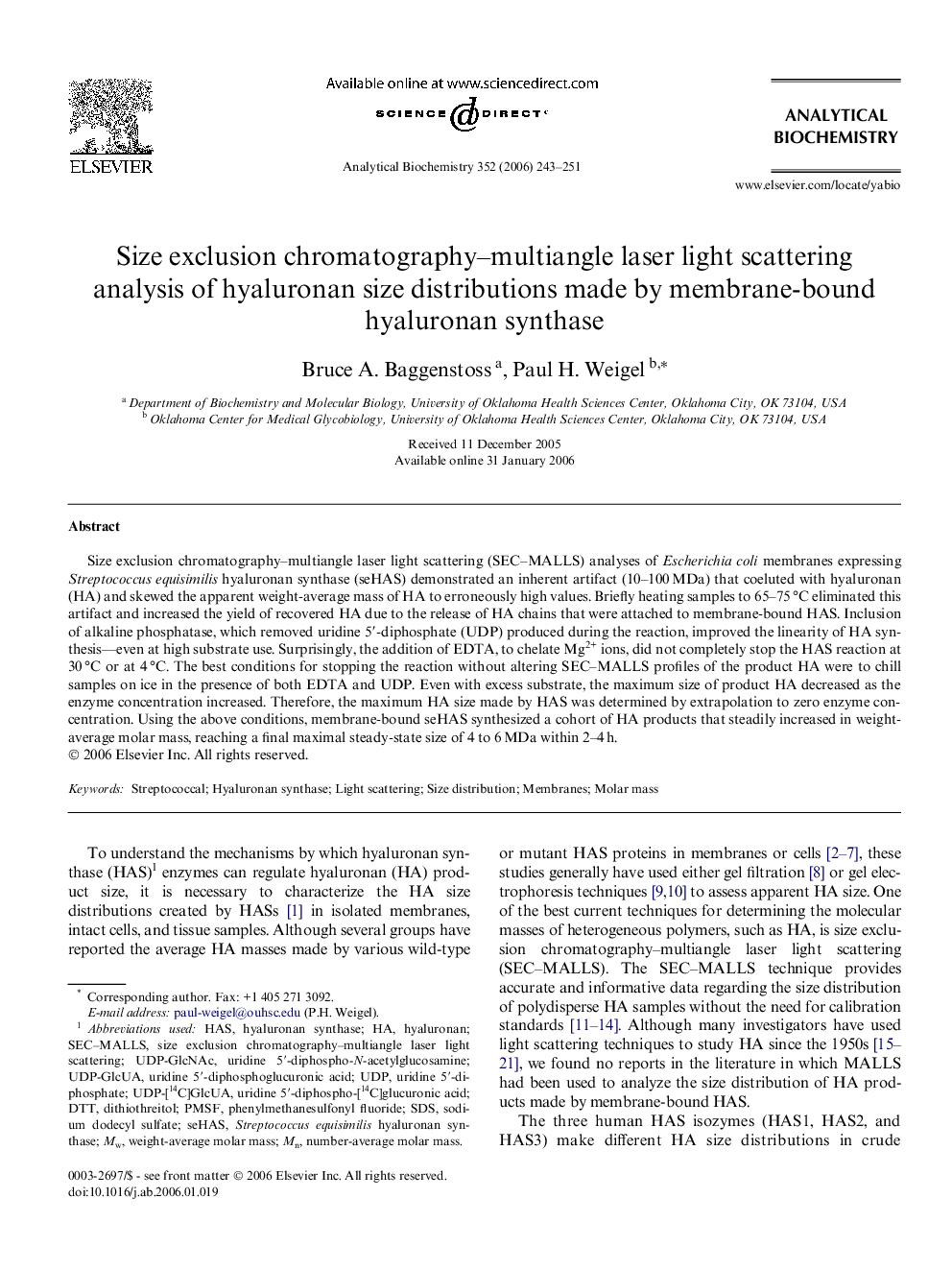| Article ID | Journal | Published Year | Pages | File Type |
|---|---|---|---|---|
| 1176052 | Analytical Biochemistry | 2006 | 9 Pages |
Size exclusion chromatography–multiangle laser light scattering (SEC–MALLS) analyses of Escherichia coli membranes expressing Streptococcus equisimilis hyaluronan synthase (seHAS) demonstrated an inherent artifact (10–100 MDa) that coeluted with hyaluronan (HA) and skewed the apparent weight-average mass of HA to erroneously high values. Briefly heating samples to 65–75 °C eliminated this artifact and increased the yield of recovered HA due to the release of HA chains that were attached to membrane-bound HAS. Inclusion of alkaline phosphatase, which removed uridine 5′-diphosphate (UDP) produced during the reaction, improved the linearity of HA synthesis—even at high substrate use. Surprisingly, the addition of EDTA, to chelate Mg2+ ions, did not completely stop the HAS reaction at 30 °C or at 4 °C. The best conditions for stopping the reaction without altering SEC–MALLS profiles of the product HA were to chill samples on ice in the presence of both EDTA and UDP. Even with excess substrate, the maximum size of product HA decreased as the enzyme concentration increased. Therefore, the maximum HA size made by HAS was determined by extrapolation to zero enzyme concentration. Using the above conditions, membrane-bound seHAS synthesized a cohort of HA products that steadily increased in weight-average molar mass, reaching a final maximal steady-state size of 4 to 6 MDa within 2–4 h.
